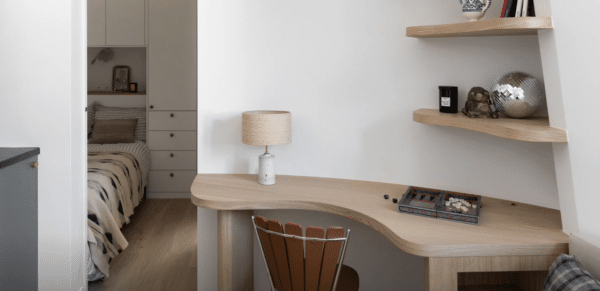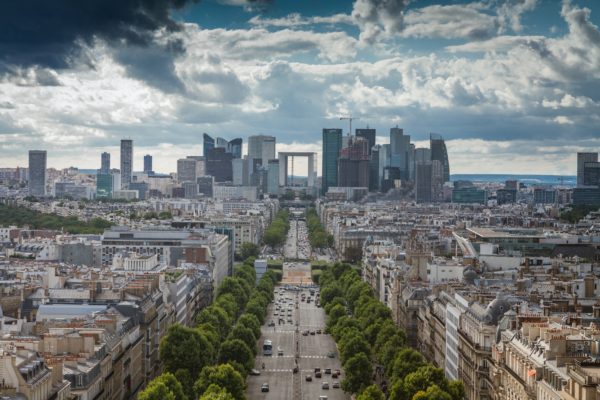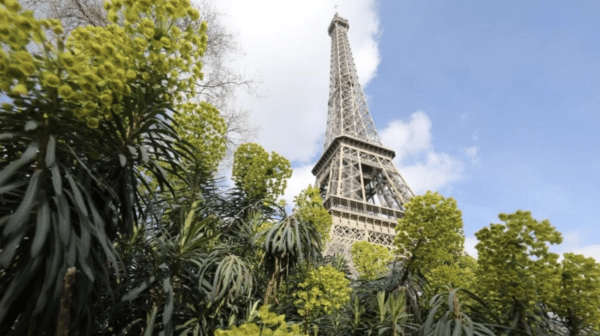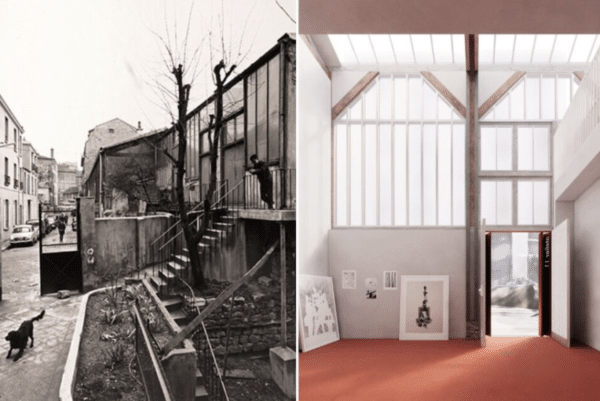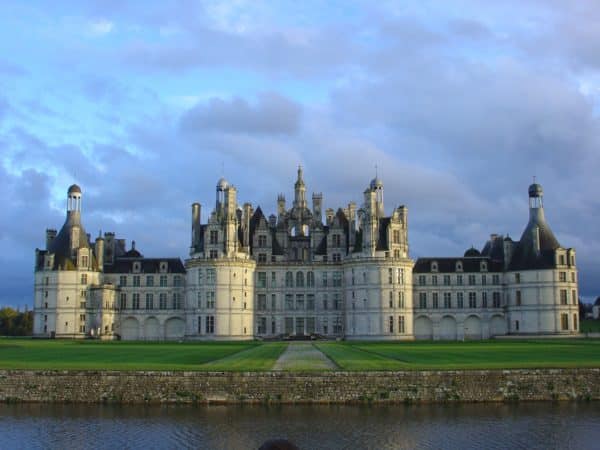Expert Insight, Breaking News, and Insider Stories on Real Estate in Paris

Passages In Paris- worth taking the time to discover.
The Covered Passages of Paris (Les Passages Couverts de Paris in French) are hidden gems in Paris and are a world apart from the crowded tourist attractions.
By the end of the 18th century, town planners created a labyrinth of commercial passages in Paris with beautiful stained-glass ceilings, mosaic works, and iron latticework, all bathed in natural light. Apart from its dominating merchant role, the Paris passages were also the new bourgeois’ favorite stroll. The goal was to protect the wealthy population from the mud and the hustle and bustle of the streets by offering them passages protected from bad weather by beautiful glass roofs and bringing together many shops and restaurants in one place.
Today, Paris has only 21 covered passages that remain open to the public. The most beautiful covered passages are almost all in the same area: the 2nd and 9th arrondissements. An architectural curiosity that takes us back to the atmosphere of the 19th century. Thanks to the great urban transformation plan of Baron Haussmann, the capital had more than 70 at the height of Paris’ evolving city-planning!
The Vero-Dodat Gallery
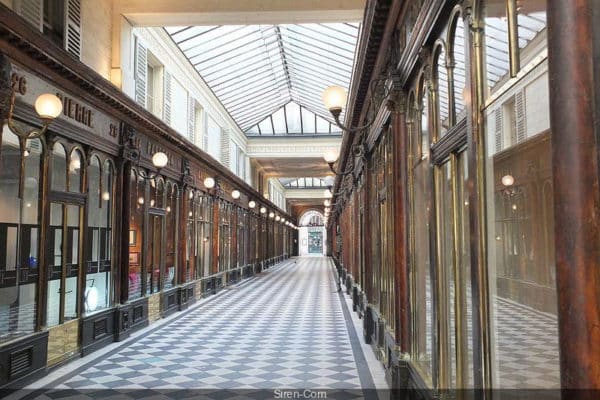
The Vero-Dodat Gallery (Paris 1)
19 rue Jean-Jacques-Rousseau / 2 rue du Bouloi
Open: Monday-Saturday, 7 a.m.-10 p.m.
Located a stone’s throw from the Louvre Museum, the Galerie Véro-Dodat has been listed as a historic monument since 1965. On the floor, a beautiful marble paving with black and white diamonds gives the gallery an effect of depth. On the ceiling, a beautiful glass roof and engravings. Since its creation in 1826, the gallery has housed many chic boutiques: decoration, furniture, art, Louboutin shoes… It is still possible to buy beautiful things there, as long as your finances allow it!
The Passage of Panoramas
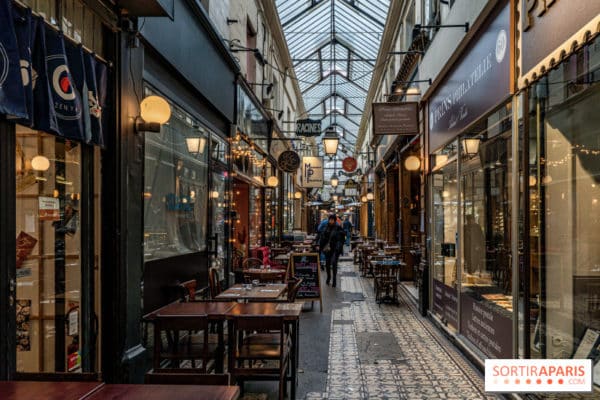
The Passage of Panoramas (Paris 2)
10 rue Saint-Marc / 11 boulevard Montmartre / 38 rue Vivienne / 151 rue Montmartre
Open: daily, 6 a.m. – 12 a.m.
The Passage des Panoramas, built in 1799, was the first covered passage in Paris and also one of the most famous in the capital. When you walk in the Passage des Panoramas, it is possible to continue the walk in the Galerie des Variétés, which joins the Passage des Panoramas. For the record, the Passage des Panoramas takes its name from the two panoramas, these lit rotundas which house a trompe-l’oeil fresco, at the main entrance to the passage, Boulevard Montmartre. Both works were unfortunately destroyed in 1831.
The Vivienne Gallery
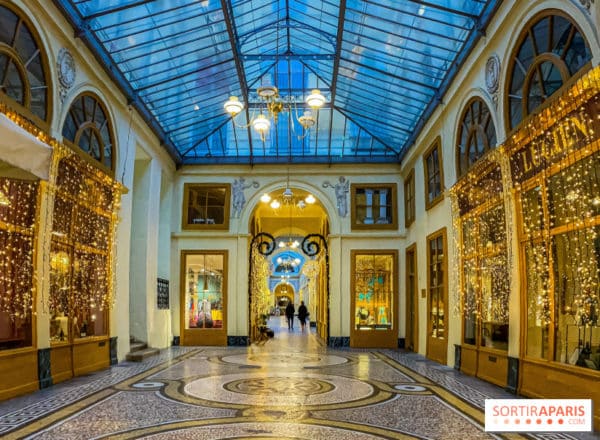
The Vivienne Gallery (Paris 2)
4 rue des Petits-Champs / 6 rue Vivienne / 5 rue de la Banque
Open: daily, 8:30 a.m. – 8:30 p.m.
With its neoclassical Pompeian-style decor, its elegant glass roof, its imposing dome, its colorful mosaic floor and its many paintings and sculptures, the Galerie Vivienne is one of the most elegant passages in Paris. Inaugurated in 1826, it has since been home to many luxury ready-to-wear and interior decoration boutiques, as well as cafés and antiquarian bookstores. It has regained its splendor thanks to the installation within its walls of major luxury brands (Kenzo organized a fashion show there in the 1970s; Jean-Paul Gaultier also settled there for a time).
The Passage of the Grand-Cerf
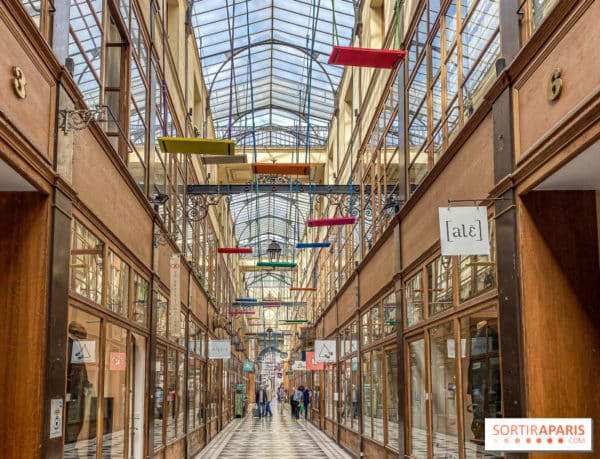
The Passage of the Grand-Cerf (Paris 2)
145 rue Saint-Denis / 10 rue Dussoubs
Open: Monday-Saturday, 8:30 a.m. – 8:30 p.m.
Opened in 1825 on the site of the Hôtel du Grand Cerf, the Passage du Grand-Cerf has not always looked like this. It was not, in fact, until 1845 that it acquired this magnificent glass roof. Inside there are many designer, decorator, craftsman and fashion boutiques. It was in the Passage du Grand-Cerf that a scene from the film Zazie dans le Métro, by Louis Malle, was shot.
The Passage of Cairo
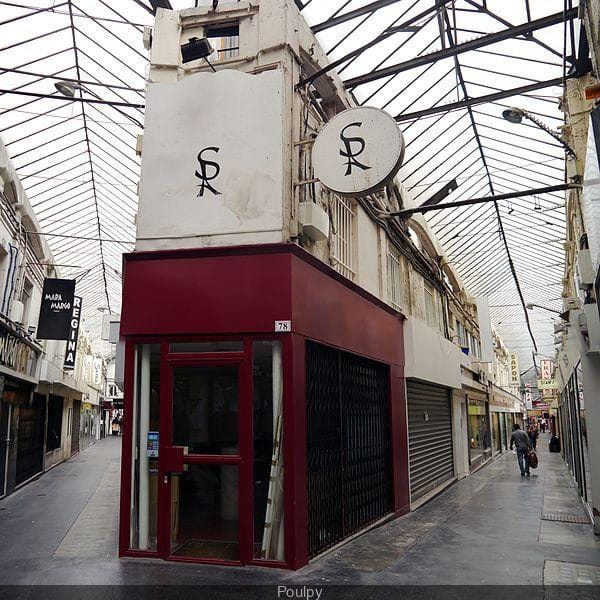
The Passage of Cairo (Paris 2)
33 rue d’Alexandrie / 2 place du Caire / 237-239 rue Saint-Denis / 14, 34 and 44 rue du Caire
Open: Monday-Friday, 7am-6.30pm
The Passage du Caire is the Parisian covered passage that holds all the records: the oldest passage still accessible (built in 1798, during Napoleon’s campaign in Egypt), but also the longest (360 meters from end to end) and the narrowest. These are really the only remarkable characteristics of this passage. Located in the Sentier neighborhood, it is now crowded with wholesale shops, fabric manufacturers and shop window mannequins. But you can still admire the 3 statues bearing the effigy of the goddess Hathor, with the ears of cows, adorning the entrance; then exit to the west for a coffee on the discreet Place du Caire.
The Colbert Gallery
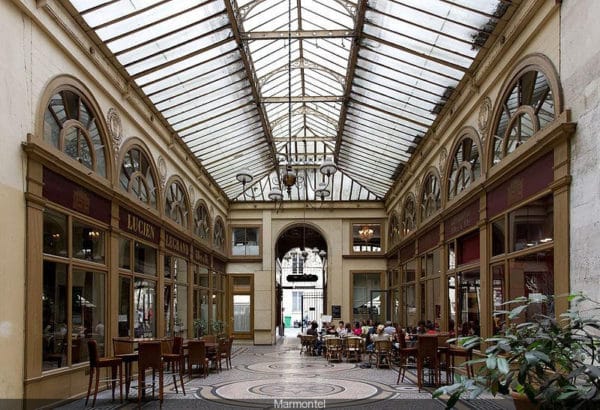
The Colbert Gallery (Paris 2)
6 rue des Petits-Champs / 2 rue Vivienne
Open: every day non-stop.
The Galerie Colbert is the competitor of the Galerie Vivienne as the prettiest Parisian Passage. Discover its magnificent rotunda surmounted by a glass dome and its dying Eurydice statue, in the center of the rotunda. This beautiful gallery was bought by the National Library of France and nowadays houses several institutes (including that of Art History and that of Heritage) as well as numerous research laboratories and schools related to art history. It is said that in 1830, the composer Berlioz sang La Marseillaise from his window, in an arrangement he had just imagined. The crowd, gathered under his windows, took up the words in chorus and legend tells us that Berlioz fainted from emotion.
The Passage des Princes
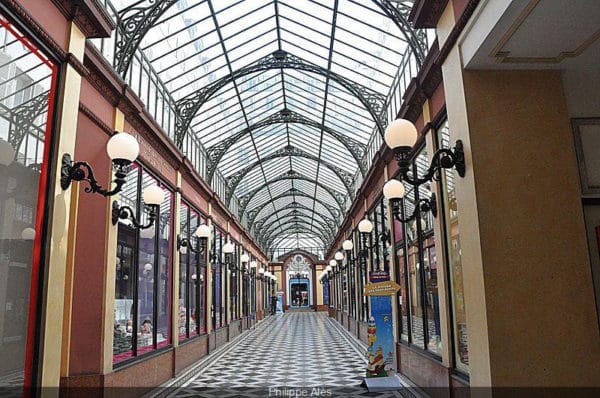
The Passage des Princes (Paris 2)
5 boulevard des Italiens / 97-99 rue de Richelieu
Open: Monday-Saturday, 8 a.m.-8 p.m.
The Passage des Princes is a very small covered passage in the 2nd arrondissement. It was the last covered passage built in Paris at the time of Baron Haussmann. Admire its beautiful glass roof erected on metal arches forming arabesques; its pretty 1930s-style dome and its admirable width. The Passage des Princes was, in fact, destroyed in 1985 for a real estate operation, but fortunately rebuilt ten years later, identical to the original design. Today, the Passage des Princes is home to a famous children’s toy company which, in order not to damage the style of the passage, has distributed its various stores in the former shops of the Passage des Princes.
Passage Choiseul
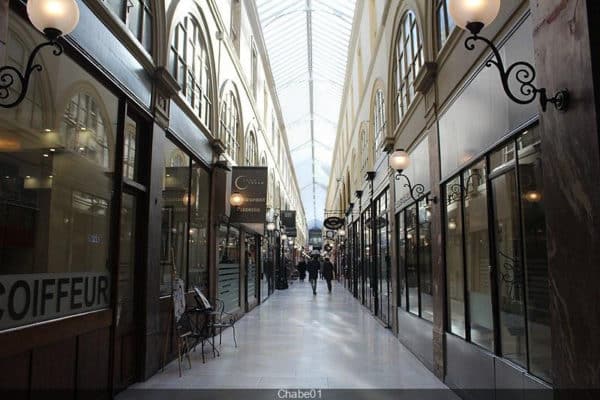
Passage Choiseul (Paris 2)
40 rue des Petits-Champs / 23 rue Saint-Augustin / 40 rue Dalayrac Passage Sainte-Anne
Open: Every day, 8 a.m. to 9 p.m.
With its 190 meter length, the Passage Choiseul is one of the largest in Paris (even if far behind the Passage du Caire and its 360 meters!). Since its opening in 1827, the Passage Choiseul has lost some of its charm with Parisians. And despite the installation of a boutique by couturier Kenzo in 1970 (now moved to Place des Victoires), the Passage Choiseul has never regained its former craze. You will be able to discover its chiseled wooden walls, its marble pilasters and its arches lined with light bulbs which replace the old gas lamps. The writer Louis-Ferdinand Céline lived there as a child between 1899 and 1907, while his mother ran a shop in the passage.
The Madeleine Gallery
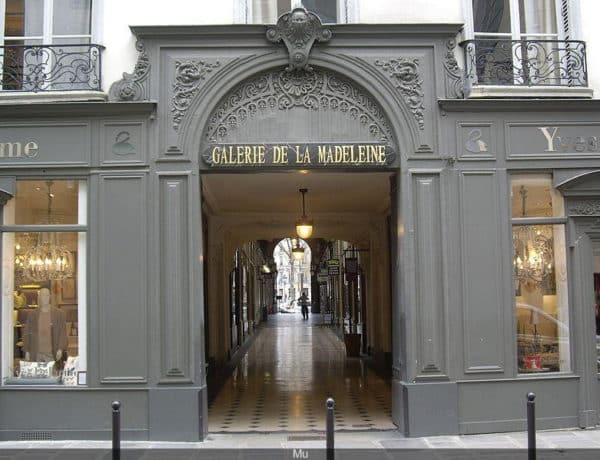
The Madeleine Gallery (Paris 8)
9 place de la Madeleine / 30 rue Boissy-d’Anglas
Open: Monday-Saturday 8 a.m.-7 p.m.
The Galerie de la Madeleine is located not far from the Church and the Place de la Madeleine. Designed by the architect Théodore Charpentier in 1840, the Galerie de la Madeleine was inaugurated in 1846 and housed many small shops and artisans. Now, luxury has invaded the passage and there are countless luxury boutiques that have taken up residence there. It still contains its glass roof divided into panels, its elegant flying buttresses and especially the two beautiful caryatids that frame the entrance porch of the gallery.
Passage Jouffroy
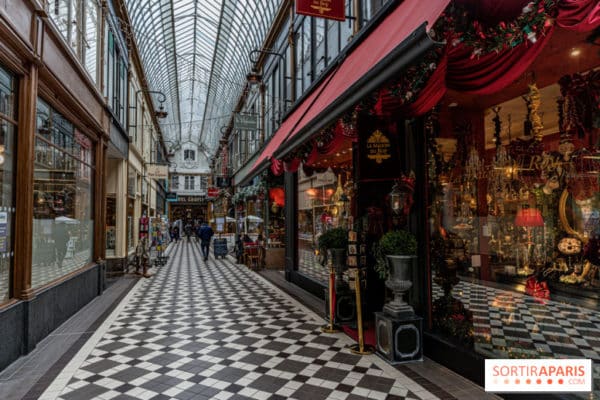
Passage Jouffroy (Paris 9)
10-12 boulevard Montmartre / 9 rue de la Grange-Batelière
Open: 7 a.m. to 9:30 p.m.
The Passage Jouffroy was built in 1836 as an extension of the Passage des Panoramas. Since then, it has been one of the busiest passages in the capital. The Passage Jouffroy served as the ground for the many architectural revolutions of the time: it was thus the first Parisian passage to be equipped with a metal and glass frame, and the first to be heated by radiant heating. The floor of this beautiful covered passage is paved in black, gray and white. It is in this passage that the Grévin Museum exit is located; so you can’t miss it if you decide to visit the famous wax statues! The Passage Jouffroy was completely renovated in 1987, 13 years after being classified as a historic monument, and is home to many old book shops.
Passage Verdeau
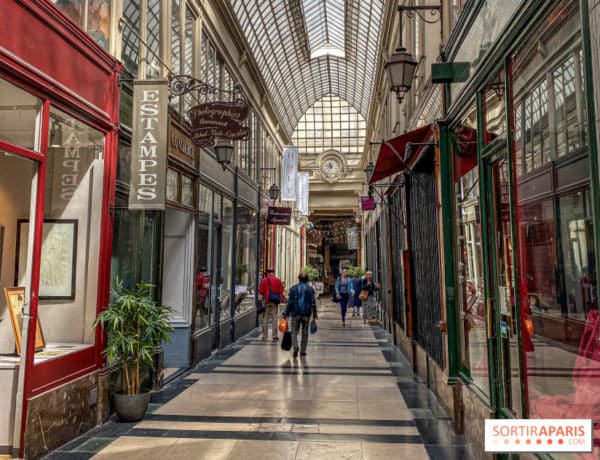
Passage Verdeau (Paris 9)
6 rue de la Grange-Batelière / 31 bis rue du Faubourg-Montmartre
Open: Every day, 7:30 a.m. to 8:30 p.m.
The Passage Verdeau is located in the extension of the Passage des Panoramas and the Passage Jouffroy. It never gained the same level of popularity as its two neighboring passages. However, this pretty covered passage has a beautiful and high glass roof in two parts (in fish bones) and a beautiful metal frame, to allow the passage of fresh air in spring and summer. The Passage Verdeau is home to many antique dealers, former booksellers and art sellers (it is located very close to the Drouot auction house) and attracts collectors of all kinds.
Passage Brady
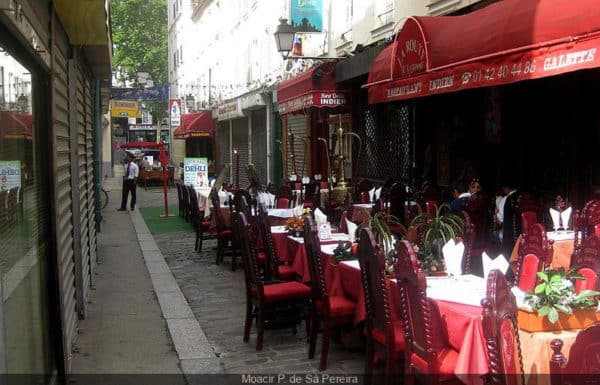
Passage Brady (Paris 10)
43 rue du Faubourg-Saint-Martin / 22 boulevard de Strasbourg / 33 boulevard de Strasbourg / 46 rue du Faubourg-Saint-Denis
Open: Monday-Saturday, 9:30 a.m.-11:30 p.m. Sunday, 6 p.m. to 11:30 p.m.
Originally, Passage Brady connected Faubourg Saint-Denis to Faubourg Saint-Martin. But in 1852, the creation of the Boulevard de Strasbourg cut the passage in two. It is therefore one of the only passages in Paris to be divided into two parts. The part that connects Saint-Denis and Strasbourg boulevards is covered and is home to many Indo-Pakistani, Mauritian and Reunionese restaurants and shops. If you have a craving for cheese naan and butter chicken, you know where to go!
Original article By Manon C., My B. Photos by My B. Published on February 18, 2022 on sortiraparis.com
and worldinparis.com
Contact Paris Property Group to learn more about buying or selling property in Paris.


